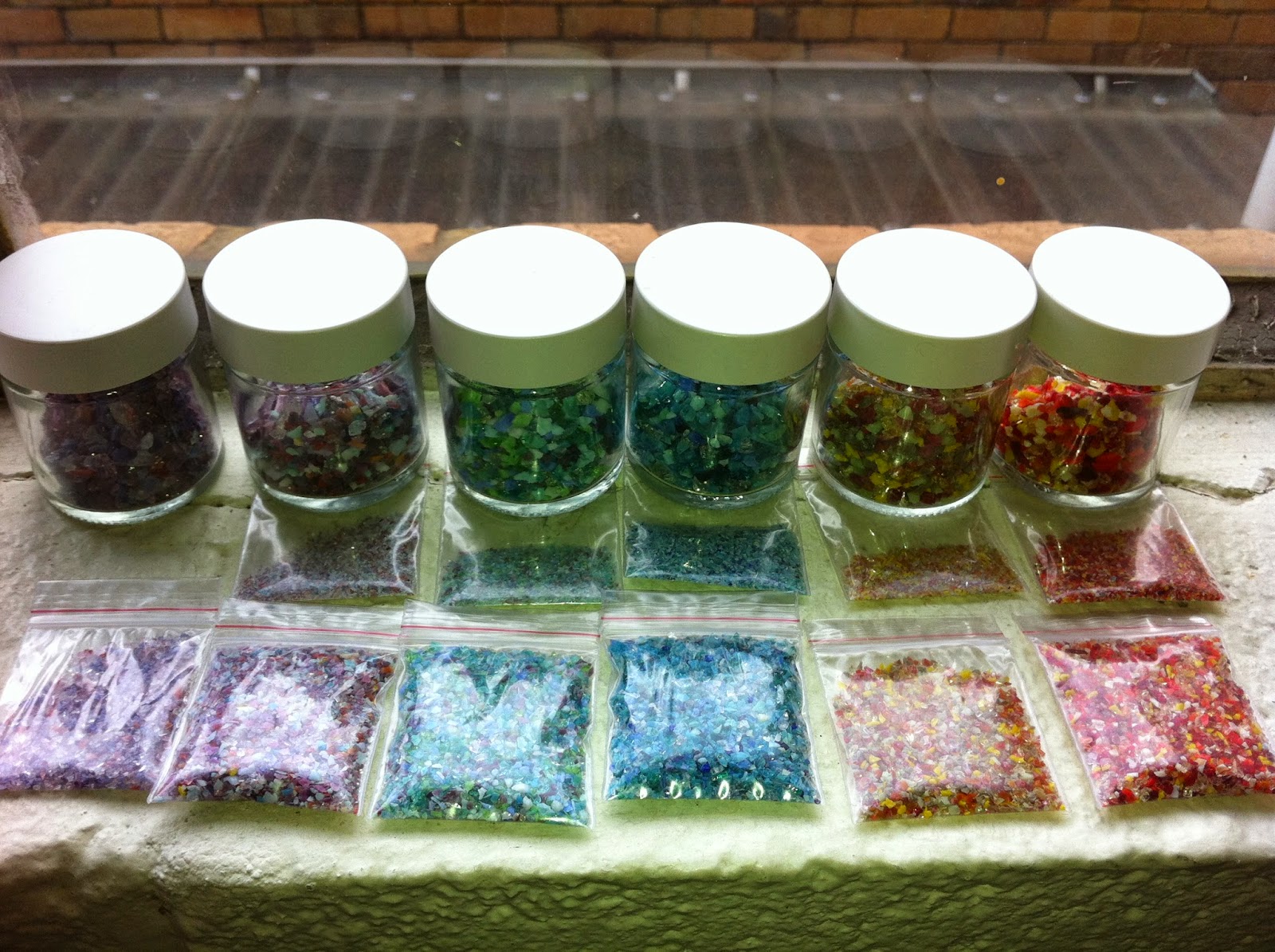There are
many ways of making frit. I have used a variety of instruments to make
frit. I am sure there are many more
ways, but these are the ones with which I have experience.
The frit
maker can be any of a number of things.
The mortar and
pestle is a very good implement for small quantities of frit. It produces a variety of sizes with little
contamination, especially if you use a ceramic set. You use a grinding motion mainly with
occasional thumps. Cover the open mortar
with a cloth to keep the bouncing glass pieces from escaping.
A coffee
grinder whether hand cranked or electric is easier. But it tends to produce one size of frit in
small quantities unless you control the grinding to short pulses and frequent
sieving. The other drawback is that the
blades of the electric grinders tend to be stainless steel which cannot be
removed by magnets. Really thorough cleaning of frit is required.
I have used
an adapted kitchen sink waste disposal unit. It produces frit of two sizes –
powder and whatever the grid opening is.
The results contain quite a bit of metal and need to be cleaned very
well. The advantage is that it can produce large
quantities of frit quickly.
The closed
end pipe and plunger is much more work but can produce quantities of varied
sizes of frit. It is better to use mild steel rather than stainless steel, as
much of stainless is not magnetic, and so the metal fragments cannot be removed
in the simplest way.
Shock
treatment. This uses thermal shock of
the glass to assist in the frit making process.
It is described elsewhere.
Grading and
Cleaning
Sieve all the
fines and powder out of the frit and discard.
The metal fragments mixed in these fines can be removed by multiple
passes of a strong magnet.
See here for
a method of keeping the magnet clean. However, there are often a number of
contaminants that cannot be removed with a magnet. Washing powdered glass, is a good way to
block drains. So the best and safest thing to do is to remove these fines from
your frit. A kitchen sieve works well to this.
You can dig this into your garden, as it makes a good soil conditioner,
or bag it and put it into the municipal waste.
Grade the
remaining frit with a garden riddle or other graduated set of screens. At this point you may wish to wash your frit
to remove any powders from the glass. Do
this in a basin to avoid eventually blocking your drains. The resulting water can be poured on the
garden, or indoor plants. Alternatively,
decant the water from the heavy glass powder and put the damp powder into a
sealed bag to protect the refuse workers if you dispose of it in public waste.
You can dry
the frit by leaving it in the open air and stirring it occasionally. You may wish to place some newspaper
over the open tray of frit to keep it free of contaminants. This still
has the risk of dust settling onto the frit as this method takes days to
dry. The quicker alternative is to put
the glass in flat open metal containers such as baking trays on top of the
kiln. A bit of aluminium foil placed on
top of the tray will reduce the dust that can get onto the frit.
Put resulting
dried and graded frit in labelled containers for future use.







If you use pestle and morter or heat shock, I assume you don't need to clean up with a magnet as no metal involved? Thanks
ReplyDeleteThat is correct. However, the powder will have a small proportion of contaminants from the mortar and pestle.
ReplyDelete